Conundrums and Paradoxes
Puzzling Findings
Criminologists have discovered a number of conundrums and paradoxes. A conundrum is a confusing or difficult question, and a paradox is a seemingly reasonable finding that leads to a senseless, logically unacceptable, or contradictory conclusion. Some of the more challenging criminological conundrums and paradoxes are presented below.
Criminological Conundrums and Paradoxes
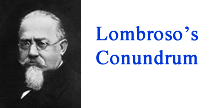
Lombroso’s Conundrum
Cesare Lombroso is a rather famous criminologist who began with the idea that criminal behavior was hereditary. After he studied many different criminals and their crimes, he came to the conclusion that heredity was only one of many factors that predisposed people to crime. He outlined a problem for criminologists that will be referred to as Lombroso’s Conundrum.” Lombroso (1899/1911; p. 1) noted that
“EVERY crime has its origin in a multiplicity of causes, often intertwined and confused, each of which we must, in obedience to the necessities of thought and speech, investigate singly.”
Criminologists must deal with this conundrum. How can one study the many factors that are related to criminal behavior when these factors need to be examined one at a time? It would seem that the development of the science of studying many causes has lagged behind the science of studying individual causes.
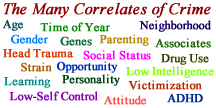
The Cornucopia Conundrum
One of the more puzzling findings by criminologists is the cornucopia of crime correlates. There are hundreds, if not thousands of factors that are related to criminal behavior. This has lead to a proliferation of theories about why crimes occur.
It seems clear that crime is a massively multivariate phenomenon.
Criminologists must deal with the paradoxical relationship between propensity and sanctioning if they wish to find a solution to the criminological puzzle.
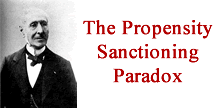
The Propensity-Sanctioning Paradox
Crimes occur at the intersection between the individual and society. Crimes are individual acts perceived by society to be harmful enough to warrant legal sanctions. De Candole (1830) noted that crime rate statistics must take this fact into account. An area’s crime rate is measuring both the propensity of an area’s citizens to harm others and also the propensity of the area’s population to sanction harmful behavior. Without some sort of corroborating evidence, there is no way to tell from crime rates whether it is the propensity to harm or the propensity to sanction that is varying from one area to another.
Durkheim (1895) pointed out that the relationship between the propensity to harm and the propensity to sanction is paradoxical because we could imagine that two areas with vastly different levels of harmful activities could have the same crime rate. Following his logic, in theory, a society could have a crime rate of zero, simply by accepting all behaviors as not worthy of sanctioning. This notion seems ridiculous, because we all “know” which acts constitute a crime.
Criminologists must deal with the paradoxical relationship between propensity and sanctioning if they wish to find a solution to the criminological puzzle.
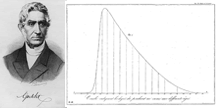
The Age-Crime Conundrum
Quetelet (1833/1984) examined the crime rates in France and noticed that the propensity for crime varied by age. Crime rates go up in childhood and late adolescence and then go down in adulthood.
The relationship between age and crime is one of the more confusing findings related to criminal behavior. Why is there such a sharp change in the crime rate trajectory during the transition from late adolescence to young adulthood?
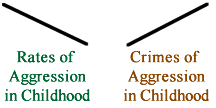
The Aggression Paradox
Tremblay and others have studied the rates of aggression for children of all ages. They find that the rates of aggressive behavior are declining for children as they get older. However, the rates of crimes of aggression are increasing during childhood.
The relationship between aggression, age, and crime is another of the more confusing findings related to criminal behavior. If rates of aggression are decreasing from early childhood, why are crimes of aggression increasing?
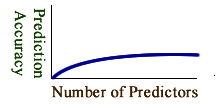
The Prediction Paradox
Levels of criminal behavior appear to have a fair amount of rank order stability and it is relatively easy to find variables that have low levels of ability to predict criminal behavior. However, it is extremely difficult to find any combination of variables that can predict criminal behavior with a high degree of accuracy. Longitudinal analyses indicate that measures of aggression have test-retest correlations of around r=.8 in the short term and r=.5 in the long term. Individual variables such as past criminal history or level of self control can routinely explain about 4% of the variance in future criminal behavior. However, it is difficult to find a combination of characteristics that explain more than 16% of the variance in future criminal behavior. This leaves 84% of the variance unexplained.
If criminal behavior is so stable and relatively easy to predict with a single variable, why is it so hard to predict with a high degree of accuracy?
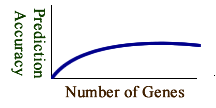
The Missing Heritability Paradox
Genome-wide association studies indicate that about 50% of the variance in criminal behavior can be explained by genetic predisposition. However, individual genes tend to be insignificant predictors of criminal behavior.
This finding points to a massively multivariate and complex problem.

The Retrospective Paradox
Life histories of people with persistent criminal behavior tend to reveal certain similarities in their developmental history. However, many children have similar characteristics and do not grow up to become criminals.
Why is it easier to explain criminal behavior in the retrospective mode than in the prospective mode?
